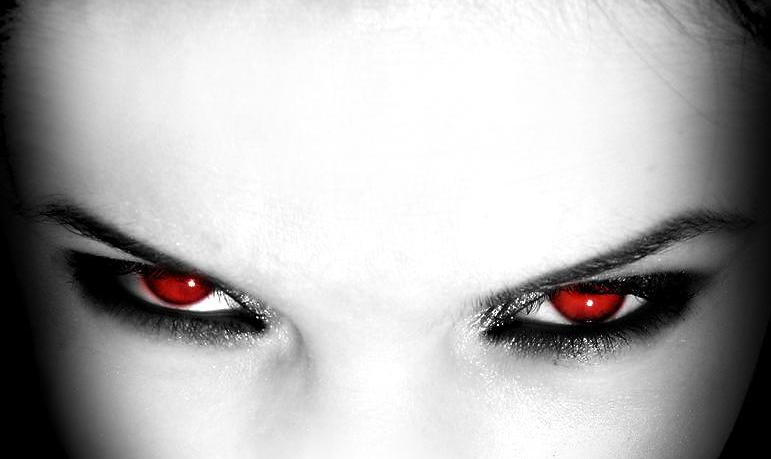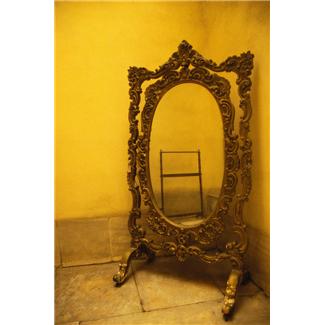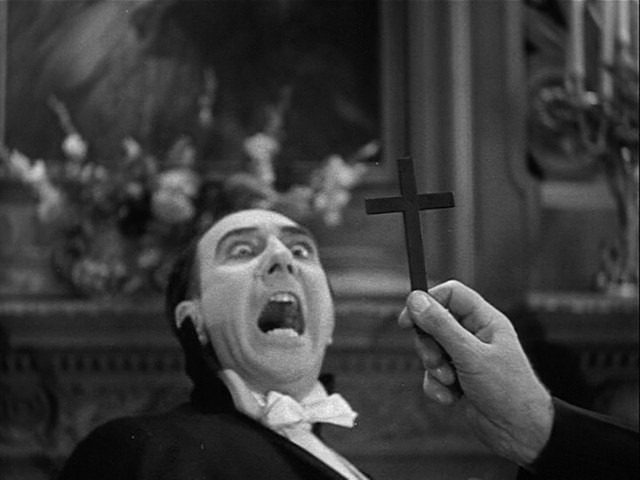Note to mods: I realise this may not be allowed, but would ask you to give it a chance. While this may look like, and indeed fulfill the criteria for a blog, I don't consider it one. Though I write a lot in these journals of mine, and do a lot of research, there's nothing I like better than debate, comment and discussion, and it would be my hope this will engender all of that. At the same time, I realise you have your rules, and I'm only new here, so will of course abide by them.
Thanks for your consideration.
Trollheart.
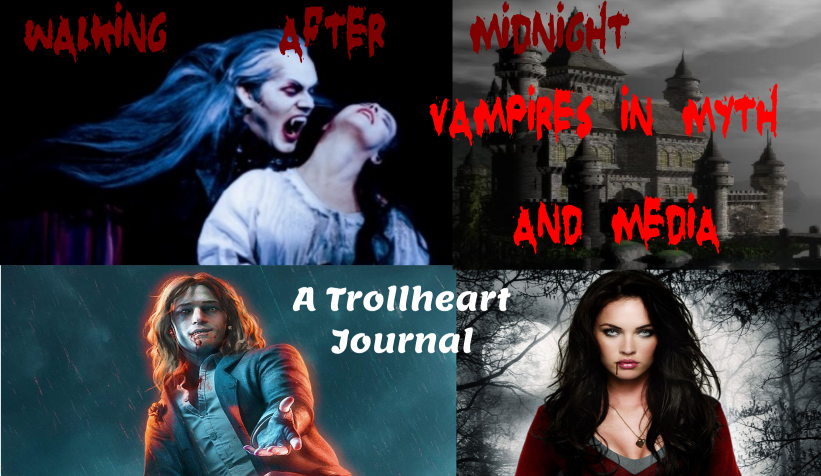
It’s a fact that we all like to be scared. Some more than others, and me less than most, but yeah, we all enjoy a good fright from time to time. BOO! See what I mean? Throughout our history, one figure has lurked in the darkness of our collective hearts, haunted our nightmares, fired our imagination and fed our curiosity. For many of us, our first encounter with the creature known as a vampire was through the writing of Bram Stoker, or perhaps through Hollywood’s later interpretation of his horror classic Dracula, but this was written just over a century ago, and itself was partially based on a person who existed, who lived four hundred years previous to that.
Throughout our history, one figure has lurked in the darkness of our collective hearts, haunted our nightmares, fired our imagination and fed our curiosity. For many of us, our first encounter with the creature known as a vampire was through the writing of Bram Stoker, or perhaps through Hollywood’s later interpretation of his horror classic Dracula, but this was written just over a century ago, and itself was partially based on a person who existed, who lived four hundred years previous to that.
But in reality, the myth of the vampire dates back much, much farther than that. Most religions and beliefs have tales of creatures who stalk the night and drink the blood of the unwary, the innocent, the damned, and it could be said that the vampire is a manifestation, perhaps the physical form of the Devil himself, Satan, the Fallen Angel of Christian belief. Or any demon in any religion or faith. Without exception, the vampire is seen as evil, a dark creature luring its victims into its cold embrace, but its glamour is such that an entire industry has grown up around the myth. From books and then movies, television series and of course music, the vampire has been celebrated for hundreds of years, feared and loathed for hundreds more.
I’ve always been fascinated by vampires, and though of course they don’t exist (my master has told me to say that, and you will believe him for he is master) the tales told of them are so compelling, so absorbing, often so terrifying and real that sometimes it’s easy to believe that they do lurk there in the shadows, watching, waiting, patient, quiet, deadly. Vampires have infiltrated every corner of our lives, from the books we read to the movies we watch, the games we play and the music we listen to. In this journal I’ll be investigating the myth (yes, Master, I told them it was a myth, like you said) behind the vampire, and taking a close look at how this phenomenon has influenced us, making millions for some of us, and providing entertainment, terror and intrigue for the rest.
I’ll be looking at the books, from Rice to Meyer and Harris and of course Stoker; at movies such as the Dracula franchise, Hammer Horror and other, less conventional vampire movies such as Let the Right One In, TV series including of course Buffy, Angel, True Blood and The Vampire Diaries as well as lesser-known works such as Moonlight, Blood Ties and Forever Knight also more light-hearted fare - Duckula, Neighbors from Hell and the recent series spin-off from the movie What We Do In the Shadows. Wherever vampires figure in music, natch, we’ll be there, and I’ll look at games as well, like Vampire: the Masquerade and Castlevania.
But it won’t be all fiction. There are, believe it nor not, people out there who actually think they are vampires. There are others who pretend they are, and rather sadly but perhaps inevitably, (and tying in with my other journal, begun on this same day) there are records of serial killers who have performed vampire-like deeds while perpetrating their heinous crimes, particularly the so-called Vampire of Dusseldorf and Vampire of Sacramento, and of course the infamous Countess Bathory. I’ll be checking their stories out and trying to get inside their twisted minds: hope I can find my way out again.
So you know, if you feel like you need to keep the lights on, or whistle tunelessly to yourself or talk to your cat while reading this, I won’t hold it against you. Maybe you’re the type who scoffs at such notions (my master loves your kind!) and loudly proclaims there’s no such thing, but remember what Shakespeare wrote, and if there are more things in Heaven and Earth that are dreamed of in your philosophy, my friend, perhaps, just perhaps, there are more things in Hell you can’t even dream of too.
Sleep well…
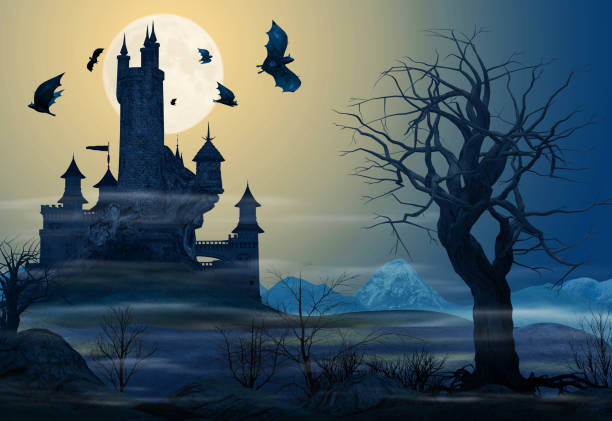


Dark Genesis: Crouching in the Shadows
So where did the idea of vampires come from? Nobody knows. It’s a very complicated question, and you can search for, and find, answers that fit the further back into history you go. Human myth has always had evil figures, back to Satan and before him too, but why vampires? Why blood? Well I guess you can say blood is the thing that allows us all to live; lose enough of it and you’re dead, so anything trying to take it from you can be seen as dangerous and evil. But a serial killer (or just a regular, garden variety killer) will do that, and while we might fear such an event, we haven’t (quite) built up the kind of mythology around serial killers as we have around vampires.
Ah, but vampires don’t just take blood, do they? They use it to fuel themselves. They thrive on it. They feed on it. And that’s the scary bit. Of course, vampires don’t exist. Well, yes they do. Both of those sentences are lies. So is that one. If something is out there (or worse, in there, waiting by the foot of your bed or at the top of the stairs or just inside your door) that wants to catch you and suck your blood so as to prolong its own life or lend it strength, hell, that’s worrying. That would be bad enough were it not for the many powers vampires are said to possess, but more of that later. We’re getting off the beaten track and wandering into dark, cold, lonely forests where the kind of things lurk that we’re trying to avoid… come back here, don’t stray! They could be out there, just waiting for someone like you.

I think it was Anne Rice who coined the phrase “the blood is the life”, and so it is. Without it, or enough of it, we die. And the idea that something exists that could, and will, steal the life-force from us for its own selfish and evil ends is an unsettling one, but also an intriguing one, which has led to, as already mentioned, the growth of an entire entertainment industry built around the vampire. Blood has always had a special significance in most religions. Some spilled it as a way of appeasing their gods, sacrificing animals or even humans on crude altars. Some drank it (usually only animal, in this case) to gain strength and perhaps knowledge, and even in Christian mythos Jesus urges his disciples, and though them, us, to drink his blood in memory of him. Does this mean Jesus was a vampire? Surely not: (note: idea for possible novel!) in this case the blood is not blood at all, but wine - merely a symbol, a metaphor for the ordeal he was about to go through. Yet even to Jesus Christ, the importance of blood could not be overstated. If you’re going to remember my sacrifice, he said, remember my blood.

Quite apart from the vampiric myths, human dread has been driven by the fear of the dead returning for as long as we could imagine it. Zombies, ghouls, revenants and ghosts all figure prominently in the shared terror of humanity, part of that fear possibly rising from the belief that if the dead can come back, perhaps there is nothing after death; no Heaven, no afterlife, no God? We surely also didn’t want to see Aunt Matilda up and walking around hours after we had buried her, and we certainly didn’t want her scratching at our windows and demanding to be let in!
Writers like Rice and Tanith Lee have postulated - presumably only for fictional purposes, though who knows what they actually believe, if anything - that the vampire legend may have gone back as far as the Egyptians. Anne Rice sets The Queen of the Damned, the tour-de-force third instalment in her Vampire Chronicles in Egypt, blaming the plague of vampires on evil spirits which inhabit the bodies of the king and queen, while Tanith Lee, in the Blood Opera series claims the ancient tale of Osiris to be the source of the myth. There are those who suggest that Judas Iscariot was the first vampire, punished as a result of his betrayal of Jesus.
But the general consensus seems to be that what we know as the “traditional” vampire originates in Eastern Europe, in the Balkan countries, where long-held folk beliefs spoke of the dead coming back to life if not properly buried with the correct rituals. It would probably be true to say that there are, or were, two distinct types of vampire down through history. The first, referred to above, which we’ll call the “traditional” or “folk” vampire, tended to be fat and bloated, red or purple in colour, and likely to have blood around its lips or on its face. These type of vampires were seen more as beasts or demons, incapable of any sort of feeling, perhaps almost automatons controlled by some evil spirit, almost dark puppets. They would have had no communication with their victims, would display no emotion and would probably walk stiffly, having been just recently dead.
The second, or what we’ll call the “romantic” vampire, never existed in folk belief but only came to life, as it were, through the pen of gothic fiction writers such as Sheridan Le Fanu, Lord Byron and Bram Stoker. In these stories, the vampire was a cultured, educated, often noble being (Count Dracula being the most obvious example) who used his (almost always his, until people started writing about female vampires some time later) charm and animal magnetism, suave nature and noble bearing to ensorcell victims into obeying his commands. The romantic vampire is well-dressed, refined, usually somewhat at ease with the world around him, very much aware of his power and has no scruples at all about using it to get what he wants. Apart from unnaturally pale skin and perhaps red eyes, outwardly he looks the same as a living man, though he may have far greater strength. He walks as a man, talks as a man and often lives as a man, in a castle, house, or other habitation, unlike the folk or traditional specimen, who was usually expected to hang out at graveyards and cemeteries, and head back to his own grave before sunrise.
In fact, both species of vampire are tied to their own coffins, be they in cemeteries or in the cellars or attics of huge houses; a vampire, traditionally and romantically, sleeps through the day in his coffin, only rising at night, when the sun, which is deadly to their kind, has set. This, along with the drinking of blood, is probably the only real point of similarity between the two types, and the romantic vampire can certainly be seen as an evolution of, or an attempt by writers to evolve the traditional or folk vampire. Why? I guess because people identify more with a living (as such), thinking, feeling being other than just a monster. Vampires may be all monsters, but we can understand one that is more like a man than one that is basically a beast. It also allows the writer more freedom to develop the character of the vampire. No woman is going to fall in love with a beastly demon who may not even be able to speak, but Count Dracula, Lestat or Angel, now that’s a different matter.

Thanks for your consideration.
Trollheart.

It’s a fact that we all like to be scared. Some more than others, and me less than most, but yeah, we all enjoy a good fright from time to time. BOO! See what I mean?
 Throughout our history, one figure has lurked in the darkness of our collective hearts, haunted our nightmares, fired our imagination and fed our curiosity. For many of us, our first encounter with the creature known as a vampire was through the writing of Bram Stoker, or perhaps through Hollywood’s later interpretation of his horror classic Dracula, but this was written just over a century ago, and itself was partially based on a person who existed, who lived four hundred years previous to that.
Throughout our history, one figure has lurked in the darkness of our collective hearts, haunted our nightmares, fired our imagination and fed our curiosity. For many of us, our first encounter with the creature known as a vampire was through the writing of Bram Stoker, or perhaps through Hollywood’s later interpretation of his horror classic Dracula, but this was written just over a century ago, and itself was partially based on a person who existed, who lived four hundred years previous to that. But in reality, the myth of the vampire dates back much, much farther than that. Most religions and beliefs have tales of creatures who stalk the night and drink the blood of the unwary, the innocent, the damned, and it could be said that the vampire is a manifestation, perhaps the physical form of the Devil himself, Satan, the Fallen Angel of Christian belief. Or any demon in any religion or faith. Without exception, the vampire is seen as evil, a dark creature luring its victims into its cold embrace, but its glamour is such that an entire industry has grown up around the myth. From books and then movies, television series and of course music, the vampire has been celebrated for hundreds of years, feared and loathed for hundreds more.
I’ve always been fascinated by vampires, and though of course they don’t exist (my master has told me to say that, and you will believe him for he is master) the tales told of them are so compelling, so absorbing, often so terrifying and real that sometimes it’s easy to believe that they do lurk there in the shadows, watching, waiting, patient, quiet, deadly. Vampires have infiltrated every corner of our lives, from the books we read to the movies we watch, the games we play and the music we listen to. In this journal I’ll be investigating the myth (yes, Master, I told them it was a myth, like you said) behind the vampire, and taking a close look at how this phenomenon has influenced us, making millions for some of us, and providing entertainment, terror and intrigue for the rest.
I’ll be looking at the books, from Rice to Meyer and Harris and of course Stoker; at movies such as the Dracula franchise, Hammer Horror and other, less conventional vampire movies such as Let the Right One In, TV series including of course Buffy, Angel, True Blood and The Vampire Diaries as well as lesser-known works such as Moonlight, Blood Ties and Forever Knight also more light-hearted fare - Duckula, Neighbors from Hell and the recent series spin-off from the movie What We Do In the Shadows. Wherever vampires figure in music, natch, we’ll be there, and I’ll look at games as well, like Vampire: the Masquerade and Castlevania.
But it won’t be all fiction. There are, believe it nor not, people out there who actually think they are vampires. There are others who pretend they are, and rather sadly but perhaps inevitably, (and tying in with my other journal, begun on this same day) there are records of serial killers who have performed vampire-like deeds while perpetrating their heinous crimes, particularly the so-called Vampire of Dusseldorf and Vampire of Sacramento, and of course the infamous Countess Bathory. I’ll be checking their stories out and trying to get inside their twisted minds: hope I can find my way out again.
So you know, if you feel like you need to keep the lights on, or whistle tunelessly to yourself or talk to your cat while reading this, I won’t hold it against you. Maybe you’re the type who scoffs at such notions (my master loves your kind!) and loudly proclaims there’s no such thing, but remember what Shakespeare wrote, and if there are more things in Heaven and Earth that are dreamed of in your philosophy, my friend, perhaps, just perhaps, there are more things in Hell you can’t even dream of too.
Sleep well…



Dark Genesis: Crouching in the Shadows
So where did the idea of vampires come from? Nobody knows. It’s a very complicated question, and you can search for, and find, answers that fit the further back into history you go. Human myth has always had evil figures, back to Satan and before him too, but why vampires? Why blood? Well I guess you can say blood is the thing that allows us all to live; lose enough of it and you’re dead, so anything trying to take it from you can be seen as dangerous and evil. But a serial killer (or just a regular, garden variety killer) will do that, and while we might fear such an event, we haven’t (quite) built up the kind of mythology around serial killers as we have around vampires.
Ah, but vampires don’t just take blood, do they? They use it to fuel themselves. They thrive on it. They feed on it. And that’s the scary bit. Of course, vampires don’t exist. Well, yes they do. Both of those sentences are lies. So is that one. If something is out there (or worse, in there, waiting by the foot of your bed or at the top of the stairs or just inside your door) that wants to catch you and suck your blood so as to prolong its own life or lend it strength, hell, that’s worrying. That would be bad enough were it not for the many powers vampires are said to possess, but more of that later. We’re getting off the beaten track and wandering into dark, cold, lonely forests where the kind of things lurk that we’re trying to avoid… come back here, don’t stray! They could be out there, just waiting for someone like you.

I think it was Anne Rice who coined the phrase “the blood is the life”, and so it is. Without it, or enough of it, we die. And the idea that something exists that could, and will, steal the life-force from us for its own selfish and evil ends is an unsettling one, but also an intriguing one, which has led to, as already mentioned, the growth of an entire entertainment industry built around the vampire. Blood has always had a special significance in most religions. Some spilled it as a way of appeasing their gods, sacrificing animals or even humans on crude altars. Some drank it (usually only animal, in this case) to gain strength and perhaps knowledge, and even in Christian mythos Jesus urges his disciples, and though them, us, to drink his blood in memory of him. Does this mean Jesus was a vampire? Surely not: (note: idea for possible novel!) in this case the blood is not blood at all, but wine - merely a symbol, a metaphor for the ordeal he was about to go through. Yet even to Jesus Christ, the importance of blood could not be overstated. If you’re going to remember my sacrifice, he said, remember my blood.

Quite apart from the vampiric myths, human dread has been driven by the fear of the dead returning for as long as we could imagine it. Zombies, ghouls, revenants and ghosts all figure prominently in the shared terror of humanity, part of that fear possibly rising from the belief that if the dead can come back, perhaps there is nothing after death; no Heaven, no afterlife, no God? We surely also didn’t want to see Aunt Matilda up and walking around hours after we had buried her, and we certainly didn’t want her scratching at our windows and demanding to be let in!
Writers like Rice and Tanith Lee have postulated - presumably only for fictional purposes, though who knows what they actually believe, if anything - that the vampire legend may have gone back as far as the Egyptians. Anne Rice sets The Queen of the Damned, the tour-de-force third instalment in her Vampire Chronicles in Egypt, blaming the plague of vampires on evil spirits which inhabit the bodies of the king and queen, while Tanith Lee, in the Blood Opera series claims the ancient tale of Osiris to be the source of the myth. There are those who suggest that Judas Iscariot was the first vampire, punished as a result of his betrayal of Jesus.
But the general consensus seems to be that what we know as the “traditional” vampire originates in Eastern Europe, in the Balkan countries, where long-held folk beliefs spoke of the dead coming back to life if not properly buried with the correct rituals. It would probably be true to say that there are, or were, two distinct types of vampire down through history. The first, referred to above, which we’ll call the “traditional” or “folk” vampire, tended to be fat and bloated, red or purple in colour, and likely to have blood around its lips or on its face. These type of vampires were seen more as beasts or demons, incapable of any sort of feeling, perhaps almost automatons controlled by some evil spirit, almost dark puppets. They would have had no communication with their victims, would display no emotion and would probably walk stiffly, having been just recently dead.
The second, or what we’ll call the “romantic” vampire, never existed in folk belief but only came to life, as it were, through the pen of gothic fiction writers such as Sheridan Le Fanu, Lord Byron and Bram Stoker. In these stories, the vampire was a cultured, educated, often noble being (Count Dracula being the most obvious example) who used his (almost always his, until people started writing about female vampires some time later) charm and animal magnetism, suave nature and noble bearing to ensorcell victims into obeying his commands. The romantic vampire is well-dressed, refined, usually somewhat at ease with the world around him, very much aware of his power and has no scruples at all about using it to get what he wants. Apart from unnaturally pale skin and perhaps red eyes, outwardly he looks the same as a living man, though he may have far greater strength. He walks as a man, talks as a man and often lives as a man, in a castle, house, or other habitation, unlike the folk or traditional specimen, who was usually expected to hang out at graveyards and cemeteries, and head back to his own grave before sunrise.
In fact, both species of vampire are tied to their own coffins, be they in cemeteries or in the cellars or attics of huge houses; a vampire, traditionally and romantically, sleeps through the day in his coffin, only rising at night, when the sun, which is deadly to their kind, has set. This, along with the drinking of blood, is probably the only real point of similarity between the two types, and the romantic vampire can certainly be seen as an evolution of, or an attempt by writers to evolve the traditional or folk vampire. Why? I guess because people identify more with a living (as such), thinking, feeling being other than just a monster. Vampires may be all monsters, but we can understand one that is more like a man than one that is basically a beast. It also allows the writer more freedom to develop the character of the vampire. No woman is going to fall in love with a beastly demon who may not even be able to speak, but Count Dracula, Lestat or Angel, now that’s a different matter.










